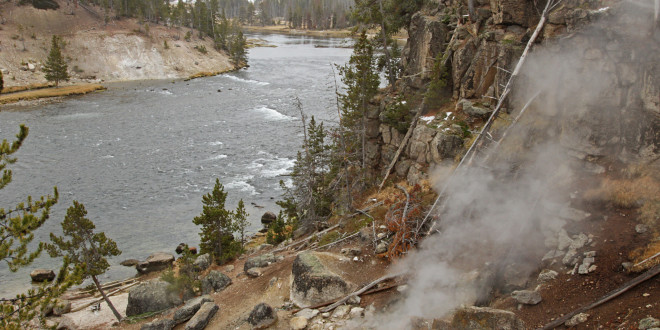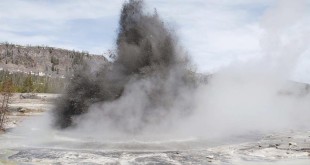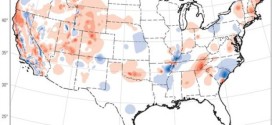A new theory of the Yellowstone supervolcano argues that shifting tectonic plates on the move 16 million years ago and not an extended magma flume created the original volcanic eruptions.
The research from Virginia Tech geoscientist Ying Zhou doesn’t change any models of how the Yellowstone thermals work today, but it does provide a theory as to how today’s Yellowstone was created. In her research, the original Yellowstone supervolcano didn’t come about because of a direct magma plume beneath the earth’s crust, but rather from the breakaway oceanic Farallon plate, once located underneath the current Pacific Ocean. When that breakaway plate was wedged under what is now the western United States, it was crushed in a way that forced parts of the Farallon plate deep enough to hit hot materials, which were then pushed upward to form the current Yellowstone volcanoes.
“In this research, there was no evidence of heat coming directly up from the Earth’s core to power the surface volcano at Yellowstone,” Zhou said in a Virginia Tech story detailing her theories. “Instead, the underground images we captured suggest that Yellowstone volcanoes were produced by a gigantic ancient oceanic plate that dove under the Western United States about 30 million years ago. This ancient oceanic plate broke into pieces, resulting in perturbations of unusual rocks in the mantle which led to volcanic eruptions in the past 16 million years.”
This counters the current model, which has the magma plume as stationary and the upper plates moving above it, leading to areas once active that are now dormant. Under Zhou’s theory, it’s been the Farallon plate moving — leading to active and dormant areas — not the upper plates. Her evidence: X-ray-like images of the Earth’s deep interior from USArray – part of the Earthscope project funded by the National Science Foundation – which led her to discover an anomalous underground structure at a depth of about 250 to 400 miles right beneath the line of volcanoes. From Virginia Tech:
The sinking section of oceanic plate slowly pushed hot materials upward to form the volcanoes that now make up Yellowstone. Further, the series of volcanoes that make up Yellowstone have been slowly moving, achingly so, ever since. “The process started at the Oregon-Idaho border about 16 million years ago and propagated northeastward, forming a line of volcanoes that are progressively younger as they stretched northeast to present-day Wyoming,” Zhou added.
The previously-held plume model was used to explain the unique Yellowstone hotspot track – the line of volcanoes in Oregon, Idaho, and Wyoming that dots part of the Midwest. “If the North American plate was moving slowly over a position-fixed plume at Yellowstone, it will displace older volcanoes towards the Oregon-Idaho border and form a line of volcanoes, but such a deep plume has not been found.” Zhou said. So, what caused the track? Zhou intends to find out.
“It has always been a problem there, and scientists have tried to come up with different ways to explain the cause of Yellowstone volcanoes, but it has been unsuccessful,” she said, adding that hotspot tracks are more popular in oceans, such as the Hawaii islands. The frequent geyser eruptions at Yellowstone are of course not volcanic eruptions with magna, but due to super-heated water. The last Yellowstone super eruption was about 630,000 years ago, according to experts. Zhou has no predictions on when or if Yellowstone could erupt again.
This is an interesting theory of how the Yellowstone supervolcano was formed, but not necessarily actionable. What always gets people talking is when or if the Yellowstone supervolcano will erupt, and this theory doesn’t really lead to a conclusion.
 Yellowstone Insider Your Complete Guide to America's First National Park
Yellowstone Insider Your Complete Guide to America's First National Park




